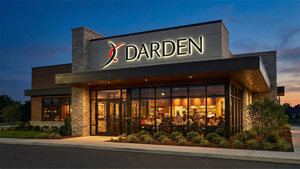Have you ever wondered why there’s a bustling shopping center on one corner and quiet homes on the next? Or why you can’t just build a towering skyscraper in your backyard, even if you own the land? The answer lies in something called zoning and land use laws. These might sound like complex legal terms, but at their heart, they’re simply rules that communities create to decide how land can be used.
They shape our neighborhoods, influence property values, and play a huge role in how our towns and cities grow. Understanding these laws is crucial for homeowners, aspiring developers, and anyone who cares about their community.
What Exactly Are Zoning and Land Use Laws?
At the most basic level, land use laws are a set of regulations that control how land within a specific area can be developed and used. As Ted Reuter, Portland Probate Estate Litigation Lawyer at Reuter Corbett, says, “Zoning is the most common and powerful tool used to implement these land use plans. Think of it like a community blueprint. This blueprint divides a city or county into different “zones” or districts. Each zone comes with its own specific rules about what can be built there and for what purpose.”
For instance, one zone might be designated for residential homes, another for commercial businesses, and a third for industrial factories. Without these rules, you could potentially have a noisy factory popping up right next to a quiet residential street, leading to conflicts, traffic issues, and a general decrease in quality of life for residents. Zoning aims to prevent such chaotic development and ensure compatible uses are located near each other.
These laws aren’t static; they evolve as communities grow and their needs change. They are typically established and enforced by local government bodies, such as city councils or county commissions. The goal is to promote public health, safety, and general welfare by ensuring orderly growth, protecting the environment, managing traffic, and preserving the character of neighborhoods.
Why Do We Have Zoning and Land Use Laws?
The concept of regulating land use isn’t new, but modern zoning really took off in the early 20th century. Before these laws became widespread, urban areas often suffered from overcrowding, unsanitary conditions, and incompatible land uses clashing side-by-side. Imagine homes built directly next to polluting factories, or businesses springing up in residential areas with no consideration for parking or noise.
Here are some of the key reasons why zoning and land use laws are so important:
- Orderly Development: They provide a framework for planned growth, preventing haphazard and chaotic development. This means streets can be laid out efficiently, utilities can be planned, and public services can be delivered effectively.
- Protecting Property Values: By separating incompatible uses (e.g., heavy industry from single-family homes), zoning helps maintain and protect property values in residential areas. No one wants to buy a home next to a chemical plant.
- Public Health and Safety: Zoning can ensure adequate light, air, and open space, prevent overcrowding, and direct hazardous industries away from populated areas. It can also regulate building setbacks and heights to improve safety.
- Managing Traffic and Infrastructure: By designating commercial centers and residential zones, planning authorities can better anticipate traffic patterns and plan for necessary roads, public transportation, and utility services like water and sewer.
- Environmental Protection: Land use laws can protect sensitive natural areas, wetlands, floodplains, and open spaces. They can also regulate density to reduce urban sprawl and encourage more sustainable development practices.
- Preserving Community Character: Zoning helps maintain the look and feel of a neighborhood. For example, historic districts often have specific zoning overlays to preserve architectural styles and prevent inappropriate new construction.
- Ensuring Adequate Public Services: By controlling population density, zoning helps ensure that schools, parks, fire stations, and other public services are not overwhelmed and can adequately serve the community.
How Zoning Laws Are Created and Changed
Zoning ordinances don’t just appear out of nowhere; they are carefully developed through a public process. Typically, a local planning department or planning commission is responsible for drafting zoning maps and text. This process usually involves:
- Research and Analysis: Studying existing land use, population trends, economic conditions, and environmental factors.
- Public Input: This is a crucial step. Residents, property owners, and businesses are given opportunities to provide feedback through public meetings, workshops, and hearings. This ensures that community values and concerns are considered.
- Drafting the Ordinance: Based on the research and public input, a draft zoning ordinance and map are created.
- Review and Approval: The draft is then reviewed by the planning commission, and finally, it goes before the local legislative body (e.g., city council or county commissioners) for adoption.
Once a zoning ordinance is in place, it’s not set in stone. It can be changed, but typically through a similar public process. If a property owner wants to use their land in a way that isn’t permitted by the current zoning, they might need to apply for one of the following:
- Zoning Amendment / Rezoning: This is a formal request to change the zoning designation of a specific piece of property. For example, changing a parcel from residential to commercial. This often requires demonstrating that the change is consistent with the community’s overall land use plan and won’t negatively impact surrounding properties, explains Corey Schafer, SEO Specialist at Florin|Roebig.
- Special Use Permit / Conditional Use Permit: Some uses, while not outright permitted in a zone, might be allowed if specific conditions are met. For example, a church in a residential zone might require a special use permit to ensure adequate parking and minimize noise for neighbors.
- Variance: A variance is a request to deviate from a specific requirement of the zoning ordinance due to unique physical circumstances of the property, not a self-created hardship. For example, if a property is unusually shaped, a variance might be granted for a smaller-than-required setback if it doesn’t harm neighbors.
These applications are usually reviewed by planning staff, the planning commission, and often the local legislative body, with opportunities for public comment.
The Impact on Homeowners and Property Owners
For most homeowners, zoning laws dictate what they can and cannot do with their property. Before buying a home, it’s wise to understand the zoning of the property and the surrounding areas. Here’s why it matters:
- What you can build: Zoning determines if you can add a second story, build a detached garage, or even put up a shed. It also sets limits on how close you can build to your property lines.
- What your neighbors can build: Understanding the zoning of adjacent parcels can give you an idea of potential future development next door. If a vacant lot is zoned for multi-family homes, you might anticipate apartments being built there, which could impact your view, privacy, or traffic.
- Home-based businesses: Many residential zones have restrictions on operating businesses from home. You might be allowed a home office, but not a retail shop that attracts customer traffic.
- Property value: Proximity to certain zones (like heavy industrial) can negatively affect property values, while being near well-planned commercial or open space zones might be a plus.
- Renovations and additions: Any significant renovation or addition to your home will likely require building permits, and part of that permit review will involve checking for compliance with zoning regulations.
- Short-term rentals: In many areas, zoning and specific ordinances now regulate or even prohibit short-term rentals (like Airbnb) in residential zones to address concerns about neighborhood character and housing availability.
If you are planning any significant changes to your property, always check with your local planning or zoning department first. They can provide you with the specific regulations that apply to your property and guide you through any necessary permit processes. Ignoring these laws can lead to fines, forced demolition, or legal issues down the road, says Dan Close, Founder and CEO of BuyingHomes.
Wrap up
In essence, zoning and land use laws are the foundational rules that shape our communities, providing a structured framework for how land is developed and utilized. These regulations, established through a public process, ensure orderly growth, protect property values, safeguard public health and safety, and preserve the unique character of neighborhoods by designating specific uses for different areas.
For every resident and property owner, a basic understanding of these laws is crucial, as they profoundly influence everything from what you can build on your own land to the overall environment and future development of the place you call home.




